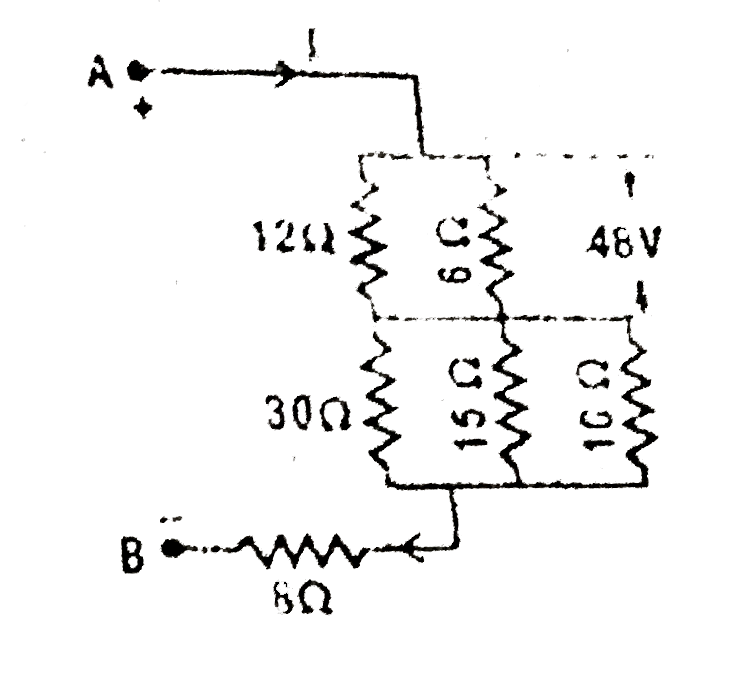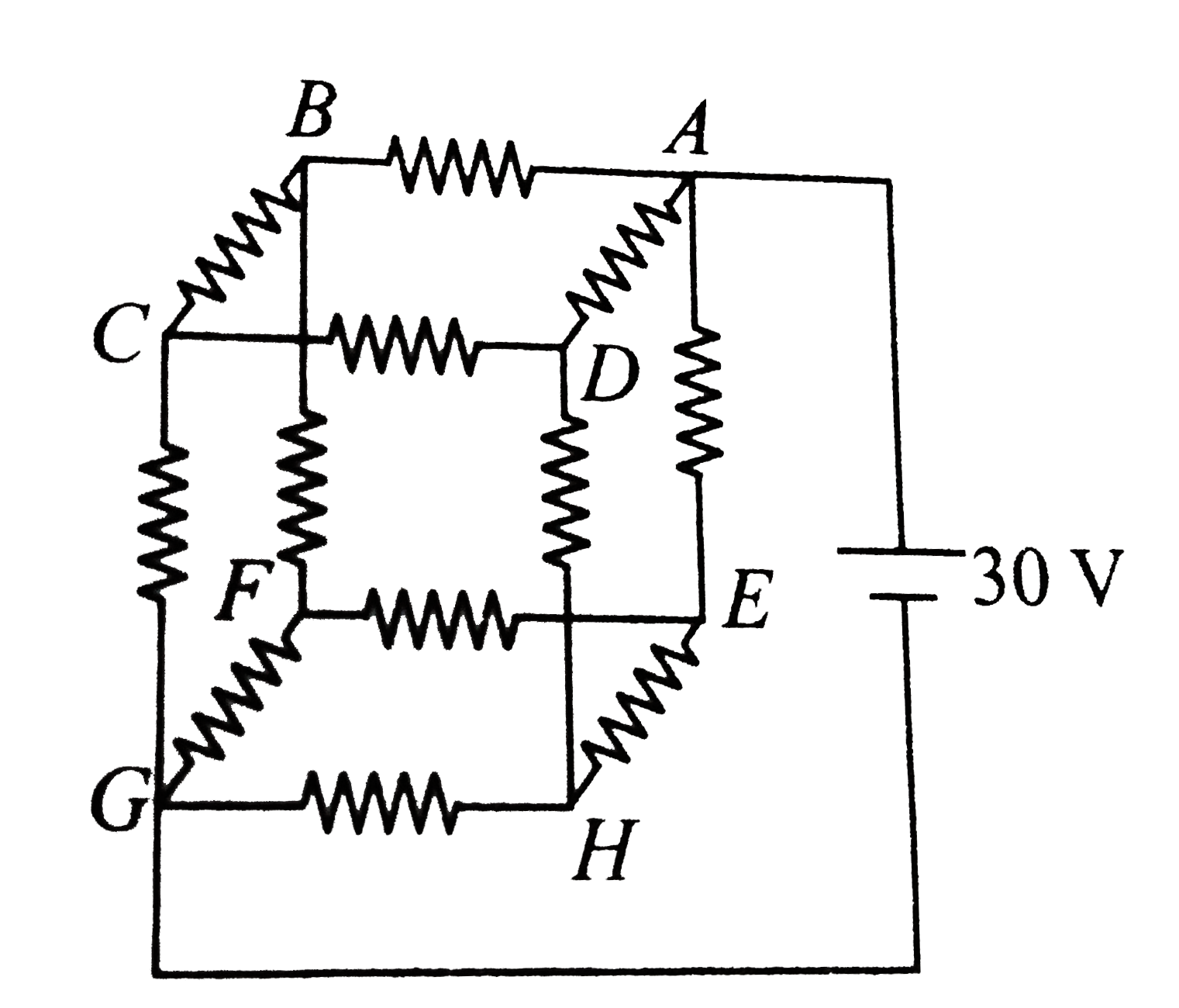Two resistors of resistances 200kΩand1Mω respectively form a potential divider with outer junctions maintained at potentials of +3Vand−15V. Then, the potential at the junction between the resistors is
0V
+1V
−12V
+12V
The correct Answer is:A
Potential difference across 1MΩ resistor is
VP−VB=18V×1×106Ω(0.2+1)×106Ω
=18V×1×106Ω1.2×106Ω=15V

VB=−15V (Given)
∴VP−VB=15V
or VP=15V+VB=15V−15V=0V
Potential difference across 20kΩ resistor is
VA−VP=18V×0.2×106Ω(0.2×1)×106Ω=18V×0.2×106Ω1.2×106Ω=3V
VA=+3V (Given)
∴VA−VP=3VorVP=VA−3V=+3V−3V=0V
Topper's Solved these Questions
- CURRENT ELECTRICITY BOOK - MTG GUIDECHAPTER - CURRENT ELECTRICITY EXERCISE - CHECK YOUR NEET VITALS
16 Videos
- CURRENT ELECTRICITY BOOK - MTG GUIDECHAPTER - CURRENT ELECTRICITY EXERCISE - MCQs AIPMT / NEET
32 Videos
- CURRENT ELECTRICITY BOOK - MTG GUIDECHAPTER - CURRENT ELECTRICITY EXERCISE - MCQs AIPMT / NEET
32 Videos
- ATOMS AND NUCLEIBOOK - MTG GUIDECHAPTER - ATOMS AND NUCLEIEXERCISE - AIPMT/NEET(MCQs)
40 Videos
- DUAL NATURE OF MATTER AND RADIATION BOOK - MTG GUIDECHAPTER - DUAL NATURE OF MATTER AND RADIATION EXERCISE - AIPMT/ NEET MCQs
30 Videos
Similar Questions
In the figure the potential difference across 6 ohm resistor is 48 V. Then the potential difference between A and B is

View SolutionThe values of current (I) flowng through a given resistor of resistance (R ), for the corresponding values of potential difference (V) across the resistor are as given below :

Plot a graph between current (I) and potential difference (V) and determine the resistance (R ) of the resistor.
View Solution
Knowledge Check
In the figure the potential difference across 6 ohm resistor is 48 V. Then the potential difference between A and B is
 A48 VB102 VC204VDcan't be determined
A48 VB102 VC204VDcan't be determinedIn a p-n junction , the barrier potential offers resistance to
AFree electrons in n-side and holes in p-sideBfree electrons in p-side and holes in n-sideCOnly free electrons in n-sideDOnly holes in p-sideIn P−N junction, the barrier potential offerse resistance to
AThe resistance of intrinsic of semiconductor decrease with increases of temperatureBDoping pure Si with interval impurities give P-type semiconductorCOnly free electrons in N -type semiconductor are holesDOnly holes in P region
A resistor circuit is constructed such that 12 resistor are arranged to form a cube as shown in fig. Each resistor has a resistance of 2Ω. The potential difference of 30V is applied across two of the opposing points as shown

In question 20, the potential difference between the points C and G is
View SolutionThe plates of a parallel plate capacitor are charged to a potential difference of 117 V and then connected across a resistor. The potential difference across the capacitor decreases exponentially with to time. After 1s the potential difference between the plates is 39 V, then after 2s from the start, the potential difference (in V) between the plates is
View SolutionA current of 5 A is flowing through a resistor of 15Ω. Calculate the potential difference between the ends of the resistor.
View SolutionA resistor circuit is constructed such that 12 resistor are arranged to form a cube as shown in fig. Each resistor has a resistance of 2Ω. The potential difference of 30V is applied across two of the opposing points as shown

In question 20, the potential difference between the points C and G is
View SolutionA resister of 80Ω is connected to a cell and the potential difference across the resistor is 40 V. Then the amount of current that flows through the given resistor is _____ A.
View Solution
